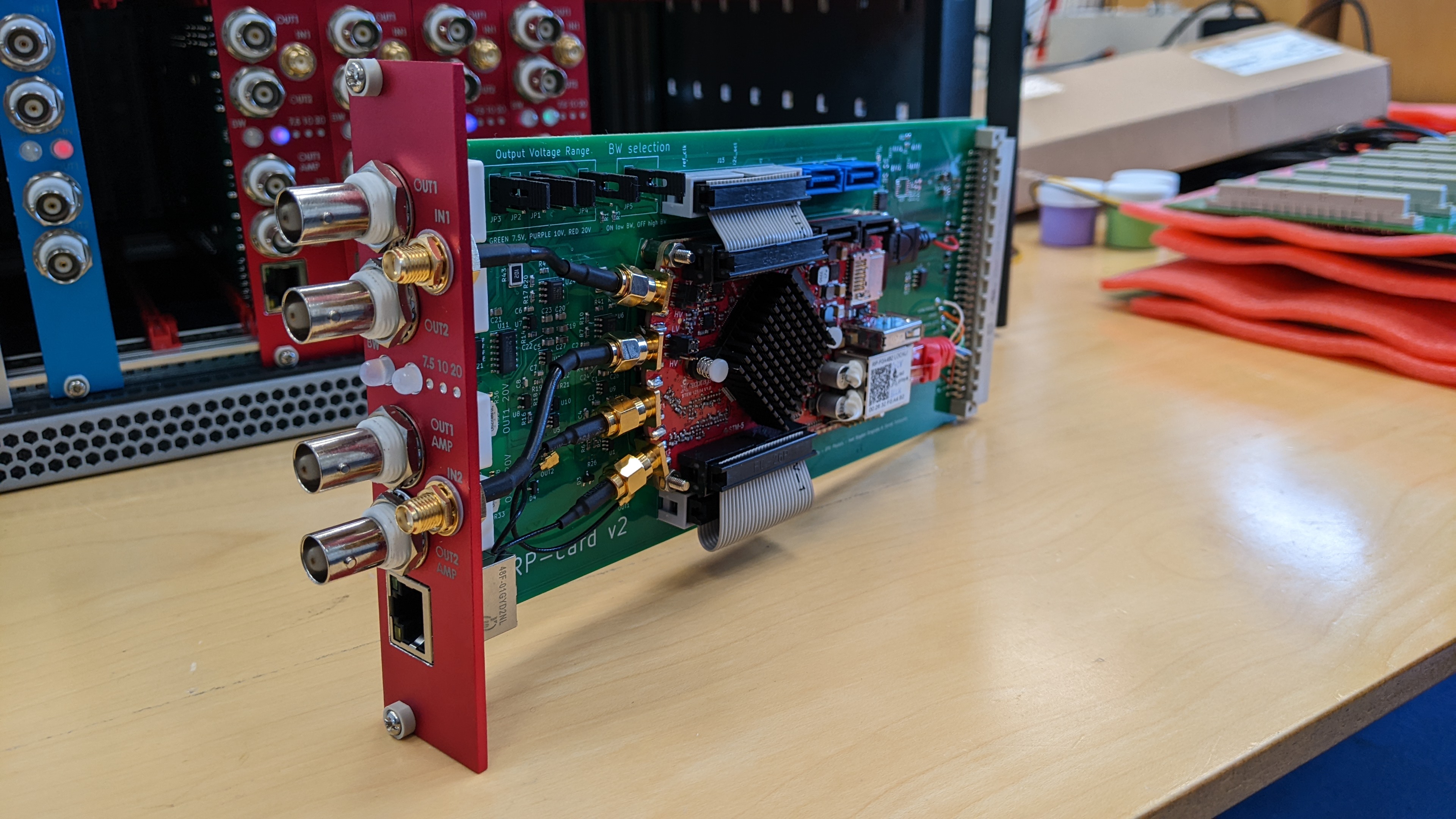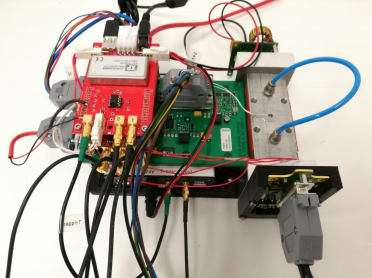Expanding the Frontiers of Quantum Computing at DTU's bigQ with Red Pitaya STEMlab 125-14
- Posted by
 Red Pitaya Team
Red Pitaya Team

An ambitious project is underway at the Center for Macroscopic Quantum States (bigQ) at the Technical University of Denmark (Danmarks Tekniske Universitet – DTU): the construction of the DASQ-1 quantum computer. This cutting-edge technology incorporates 17 Red Pitaya STEMlab 125-14 boards, a testament to this device’s versatility and capability in advanced scientific applications.
What is the DASQ-1 Quantum Computer?
The DASQ-1 quantum computer, which is being developed in the Innovation Fund Denmark PhotoQ project, represents a significant advance in the realm of computational power and capabilities. Unlike traditional computers, and even differing from many other quantum computers, the DASQ-1 operates on some unique principles.
Continuous Variable Quantum Information Processing: In contrast to classical computers that use bits (0s and 1s), and other quantum computers that use quantum bits or qubits, the DASQ-1 utilizes continuous variable quantum information processing. This approach involves quantum states that are not limited to discrete values (like 0s and 1s) but can exist in a continuum of values. By exploiting properties like quantum superposition and entanglement in these continuous variables, the DASQ-1 is able to perform complex calculations at an incredibly rapid pace, far surpassing the capabilities of classical computers.
Quantum Entanglement: Integral to its operation, the DASQ-1 also leverages the phenomenon of quantum entanglement. In this state, the properties of one particle are directly correlated with another, regardless of the distance separating them. This characteristic is essential for the DASQ-1's ability to efficiently tackle certain types of problems that are beyond the reach of classical computational methods.
.jpg?width=887&height=768&name=PXL_20230424_110628880%20(1).jpg)
Innovative Use of STEMlab 125-14 in Quantum Computing
The DASQ-1 quantum computer at bigQ is a pioneering project in the field of quantum technology. A crucial component of this endeavor is the STEMlab 125-14 boards, which play the following varied and pivotal roles:
Stabilization of Optical Paths: Fourteen of these boards, managed through Leonhard Neuhaus' PyRPL project, are dedicated to stabilizing optical paths. This is a critical function in quantum computing, where precise control of optical components is essential for accurate quantum state manipulation and measurement.
Photon Arrival Time Tagging: Three of the STEMlab boards are uniquely adapted with a special FPGA image, converting them into devices for photon arrival time tagging. This adaptation underscores the flexibility of the STEMlab boards, allowing them to be customized for specific, high-level quantum computing tasks.

Addressing the Challenge of Physical Cabling
A notable challenge in using multiple Red Pitaya boards, as experienced in previous lab setups, has been managing the physical cabling. This becomes increasingly complex with as the number of boards rises. To tackle this issue effectively in the DASQ-1 quantum computer, the team at bigQ has developed an innovative rack-mounting system specifically for the STEMlab 125-14.
Custom Rack-Mounting System for Enhanced Organization and Efficiency
This custom-designed system is a significant enhancement to the lab's infrastructure:
4U Sub-Rack Design: The rack-mounting system features a 4U sub-rack, providing a compact and organized way to house the Red Pitaya boards.
Integrated Power Supply and Cooling: The system includes a dedicated power supply and cooling mechanism, ensuring the boards operate efficiently and reliably, which is crucial for maintaining the stability of quantum computing processes.
Common 125 MHz Clock: A common clock across all boards is another critical feature, allowing synchronized operations – a necessity in quantum computing where timing precision is paramount.
Capacity for 14 RP-Cards: The rack can accommodate up to 14 RP-cards, each consisting of a STEMlab 125-14 and a two-output channel amplifier. This setup enhances the output voltage and current, making it suitable for driving high-voltage piezo amplifiers or low impedance chip heaters, integral in quantum experiments..jpg?width=4032&height=3024&name=PXL_20230525_135648618%20(1).jpg)
Feedback from the Quantum Computing Frontier
Axel Bogdan Bregnsbo, a research engineer at DTU Physics – Quantum Physics and Information Technology, is very satisfied with the STEMlab 125-14's flexibility and ease of use. The success of the DASQ-1 project, as supported by Red Pitaya technology, marks a significant step forward in quantum computing and experimental physics, showcasing the potential of these affordable and versatile boards in pushing the boundaries of scientific exploration.






